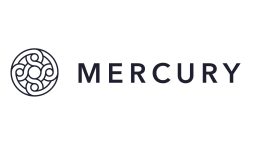It’s an uptrend reflected in PYMNTS data, where 36% of percent of U.S. and U.K. businesses surveyed said they planned to upgrade their spend management and expense controls. And another 46% of firms plan to enable payments from digital invoices in the next three years.
This is according to PYMNTS’ August 2021 Corporate Spend Playbook, which analyzed how companies’ spend management needs have changed over the past year, while also delving into the benefits they can realize by automating budgeting and spend solutions.
See also: PYMNTS’ August 2021 Corporate Spend Playbook
Need to Innovate
The shift to remote working environments is one factor behind the growing interest in these solutions. Firms are finding that they need to innovate their budgeting and spend controls to keep pace with this move. Many are restructuring their expense reporting or other spending processes to respond to the new ways employees are working and money is moving after the impact of the past year.
Advertisement: Scroll to Continue
With the shift to remote work, expense report violations rose by 292% in 2020. If employees were not allowed to bring equipment from their offices to their homes, many purchased tools or furniture themselves. That generated confusion around what should qualify as business expenses and how they should be reported. This caused employee frustration with delayed or outdated budgeting tools. In fact, 84% of employees said that better spend management systems would improve their opinions of their employers, and 78% said it would make them more productive workers.
Organizations are also finding that they need tools that can handle a higher quantity of digital data with the speed and accuracy needed to stay competitive. Digital spend controls allow AP teams to easily view expenses from different sources in their companies, such as corporate card spend, or help consolidate digital invoices and receipts on one convenient platform.
Companies also are becoming more global in scope. A PYMNTS study found that $10 trillion of the $120 trillion in payments volume that changes hands between business trading partners annually is now sent across borders. Tightly controlling spending to maintain one’s budget is critical for businesses that want to perform successfully on this worldwide stage.
Growing Awareness
Despite these benefits, only 19% of chief financial officers have fully automated financial processes at their firms.
One hurdle to the adoption of digital spend controls is a lack of awareness. Many companies may be unfamiliar with the digital tools or platforms they could use to easily and transparently track their spending. Thirty-five percent of CFOs report that a lack of awareness of digital technologies and their potential usefulness is holding them back from innovating their budgeting, cash management or other business processes.
That is changing with the shift to a remote workforce and the demands of a competitive marketplace. As the digital economy continues to evolve, companies will want to keep a close eye on how automation and other technologies could clarify their budgeting and give them tighter control over cash flows.




